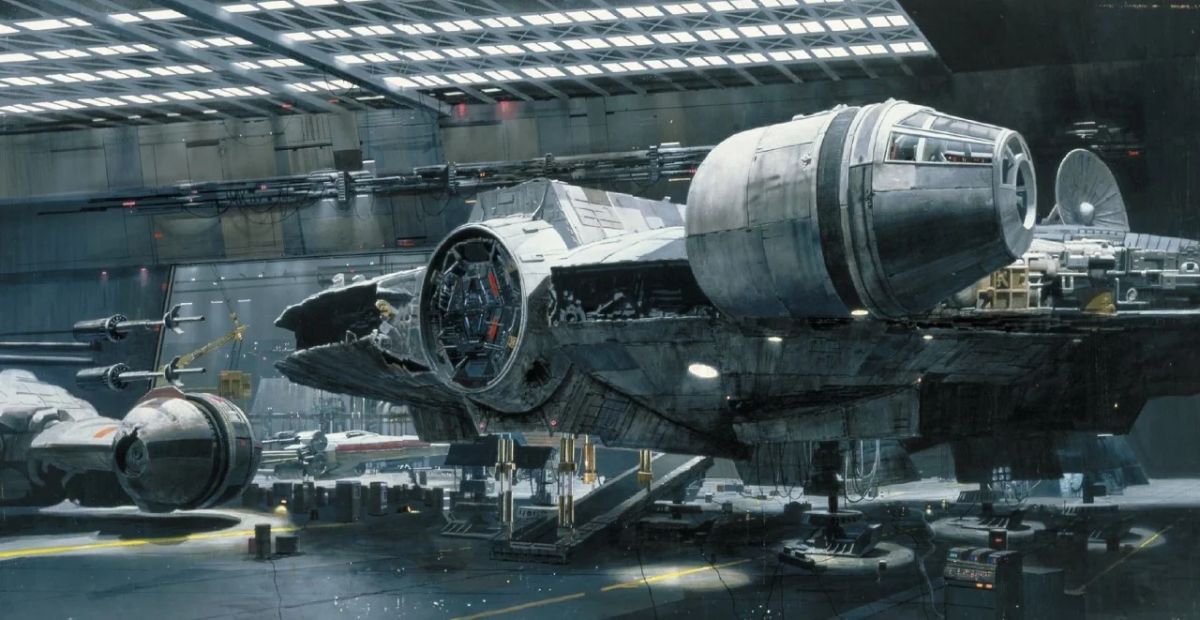We may not remember, but there was a time before CGI. The original Star Wars films had to rely on artist-created visual effects, instead of computer-generated imagery.
The effects were so well done that we probably mistook them for props and sets.
We may not realize it, but some of the props were actually paintings. Read more to find out about these fascinating visual effects.
The Art of Star Wars
In 1979, the book The Art of Star Wars was published to capture the artwork of conceptual designer Ralph McQuarrie.
This book and an expanded edition from 1997 is a compilation of sketches, storyboards, and paintings used in the original trilogy. It provided a look into the vast scale of artistry that was required to pull these films off.
The visual effects company Industrial Light and Magic (ILM) was the organization behind most of the art in the original movies.
Founded by George Lucas and connected to Lucasfilm, ILM was known to have a “chaotic and unorthodox” work environment that initially struggled to produce credible visual effects.
Thanks to Lucas’ direct supervision, ILM persevered. While A New Hope extensively used models, paintings were often used to supplement or replace them.
Matte artist Harrison Ellenshaw played a significant role in bringing scenes to life, as did Michael Pangrazio, who was brought on for The Empire Strikes Back and Return of the Jedi.
Matte paintings took center stage in the completion of the first three movies. The Slave I matte painting in Empire was among 100 works that Ellenshaw supervised, reflecting a scale of creativity not achieved by props alone.
Some of the Props Were Actually Paintings
Fans have recognized “the magnitude of hard work” on visual effects to complete the original trilogy. As noted, “matte paintings” were “standard in film” before the age of CGI.
A New Hope, especially, had to draw on a large creative reservoir from its artists.
For a spaceship, they would complete “a physical miniature,” for “a monster it was a puppet,” and for “a sweeping vista, it was a matte painting.”
However, the use of paintings surpassed vistas. Instead of props, matte paintings were used for stormtroopers who lined up to greet the Emperor’s shuttle, to depict sides of the Death Star, and for some of the 3-D Millennium Falcon shots.
In The Empire Strikes Back, seventy matte paintings were created by McQuarrie, Pangrazio, and Ellenshaw at ILM.
Using acrylic and oil paints on glass, these artists depicted the Battle of Hoth, with AT-AT Walker models photographed in front of the paintings, Echo Base’s interior, and the establishing Dagobah swamp scene.
This clip here reveals the creative process of composing Cloud City.
To forge these exterior shots took “subtlety” and top artistry to bring out the sky and lighting correctly. These visual effects may even be better than CGI.
The same goes for the rows of stormtroopers that audiences assumed was a set–it was actually a mix of actors and matte painting.
These techniques lived on past the original films too. The Force Awakens made use of several matte paintings, such as the forest background for Takodana.
Yet, the visual effects in the original films tend to stand out for their trailblazing methods to bring the action alive.
Paintings in Star Wars
We may have thought that props and sets explained how A New Hope and the next two original films were made.
However, matte paintings were critical to bringing out realism and fantasy before the age of CGI. Some think that these paintings are even better than what we use today.

